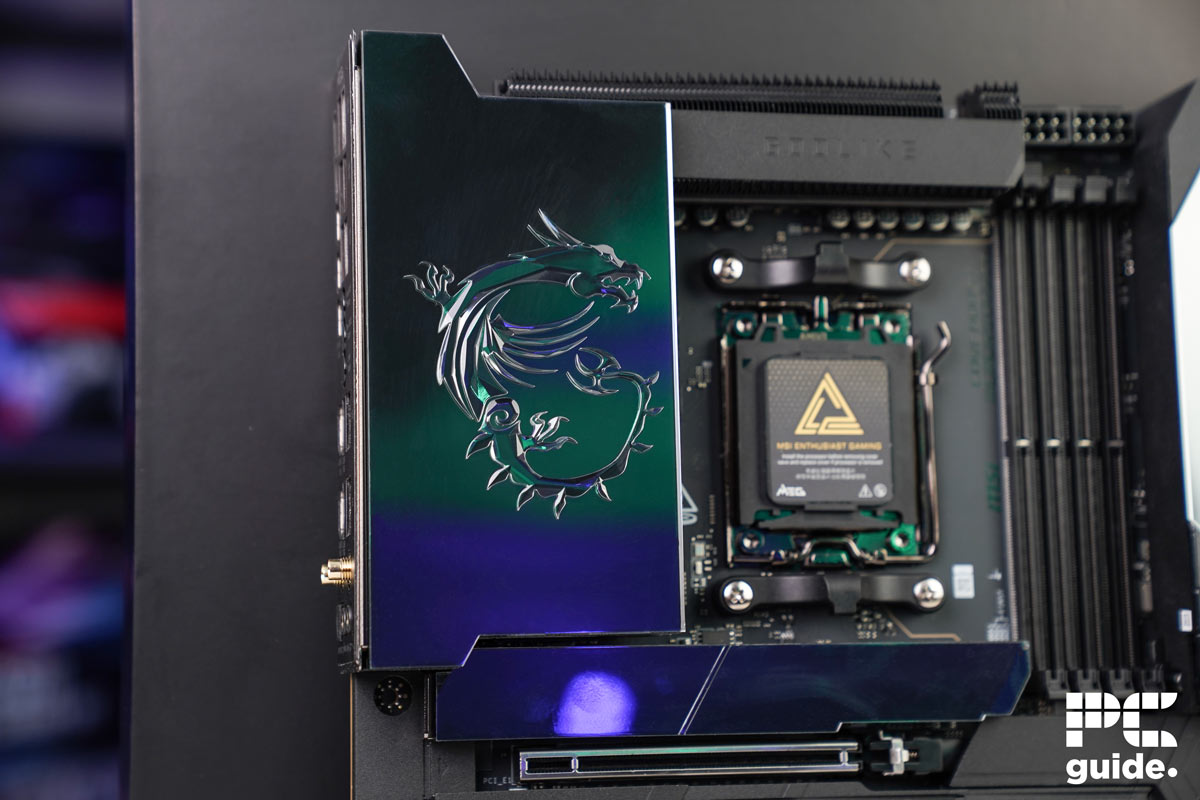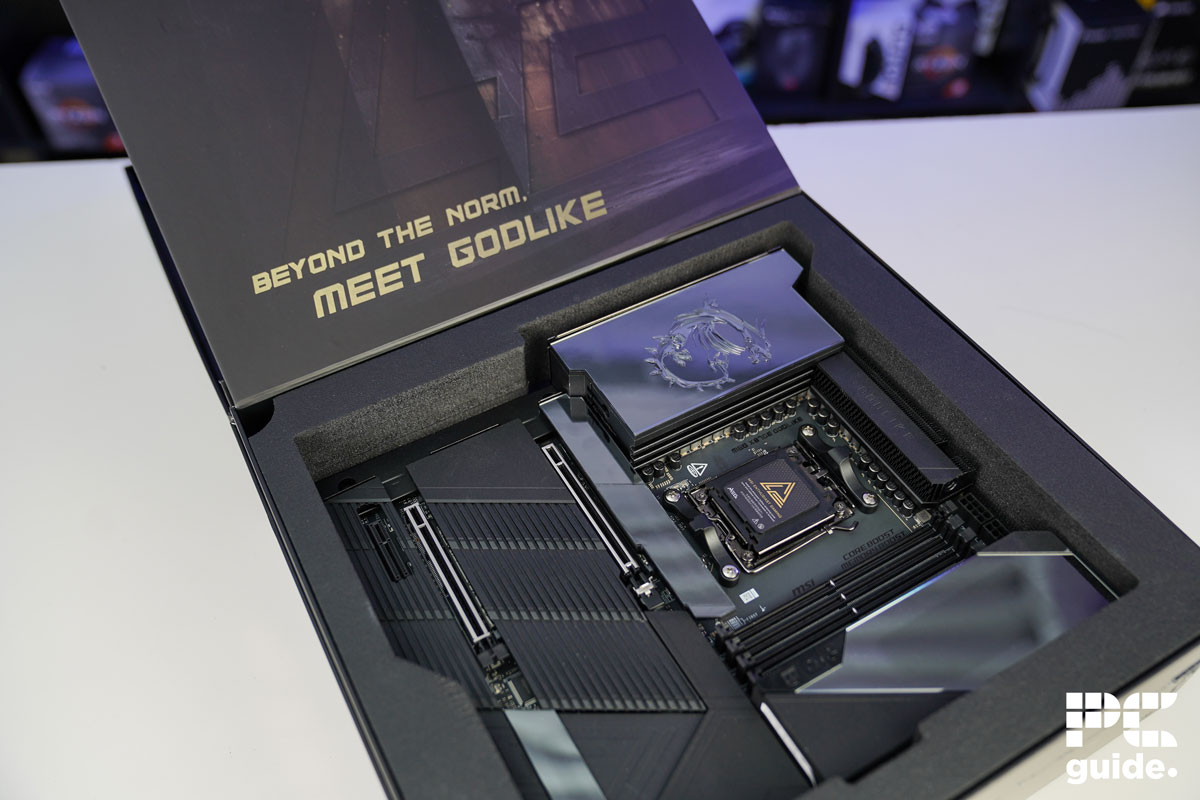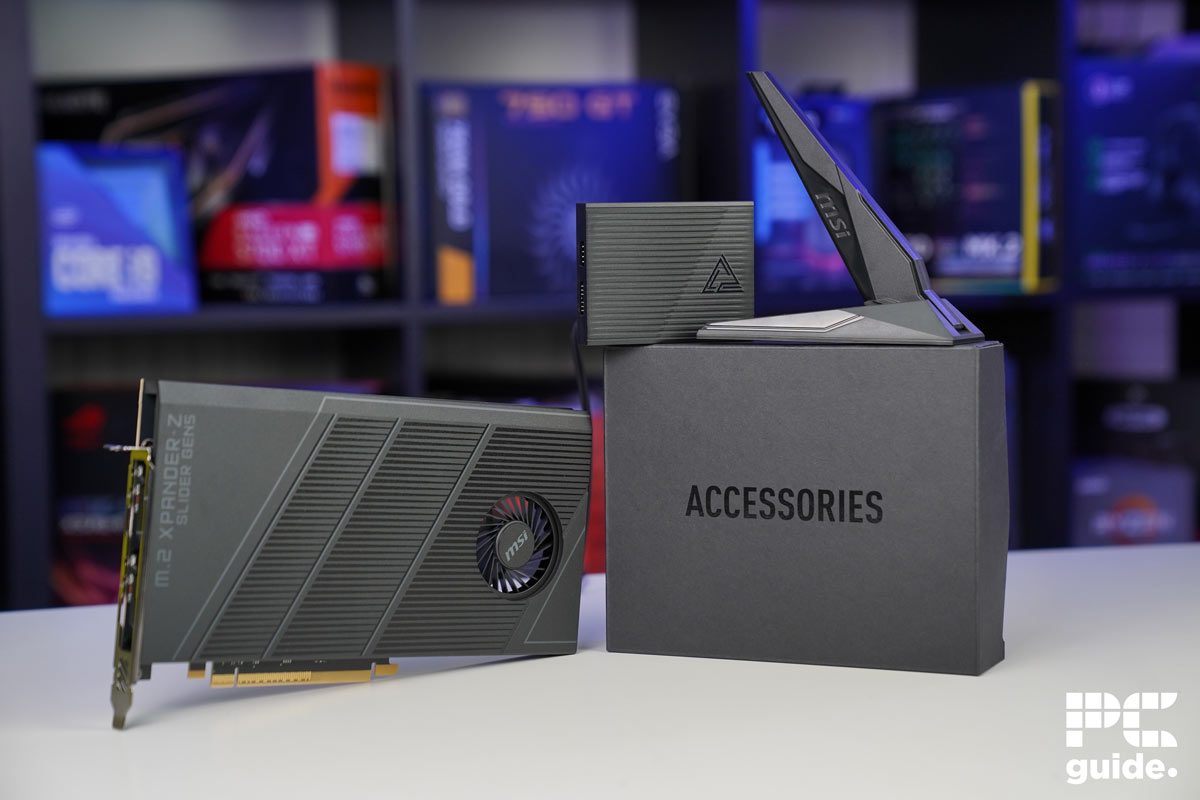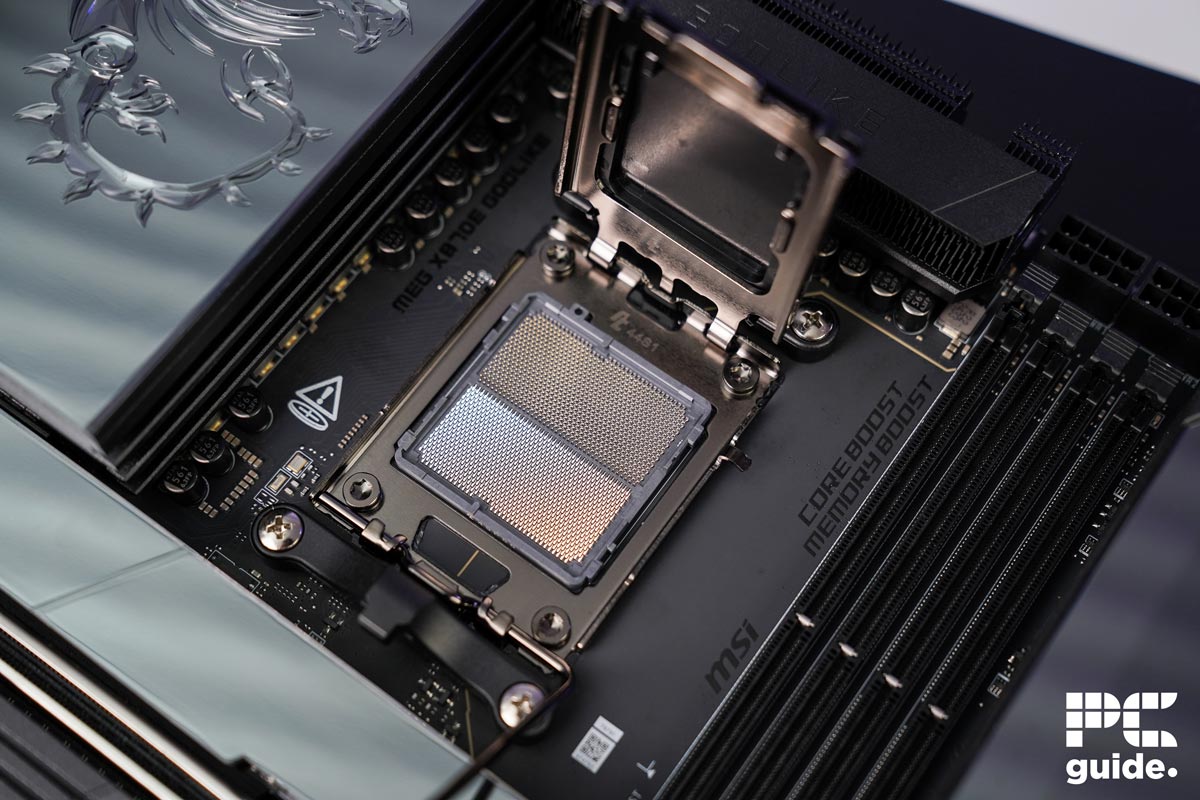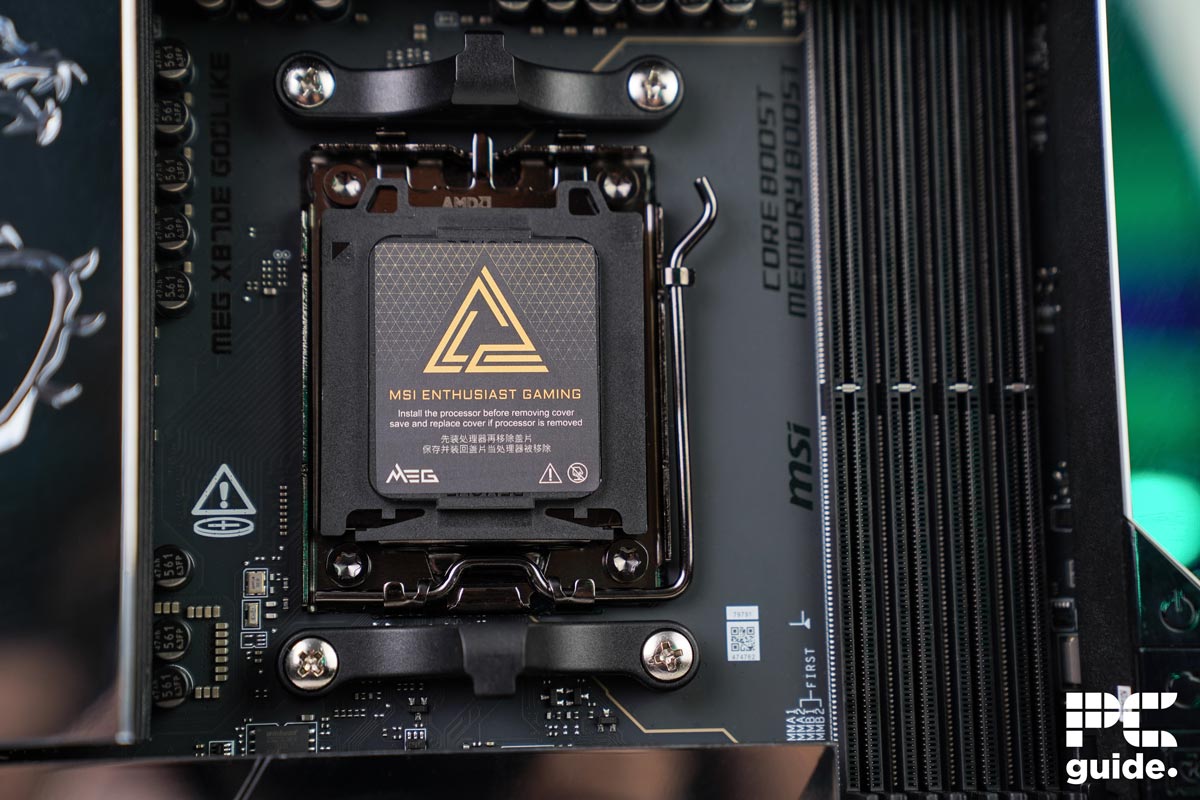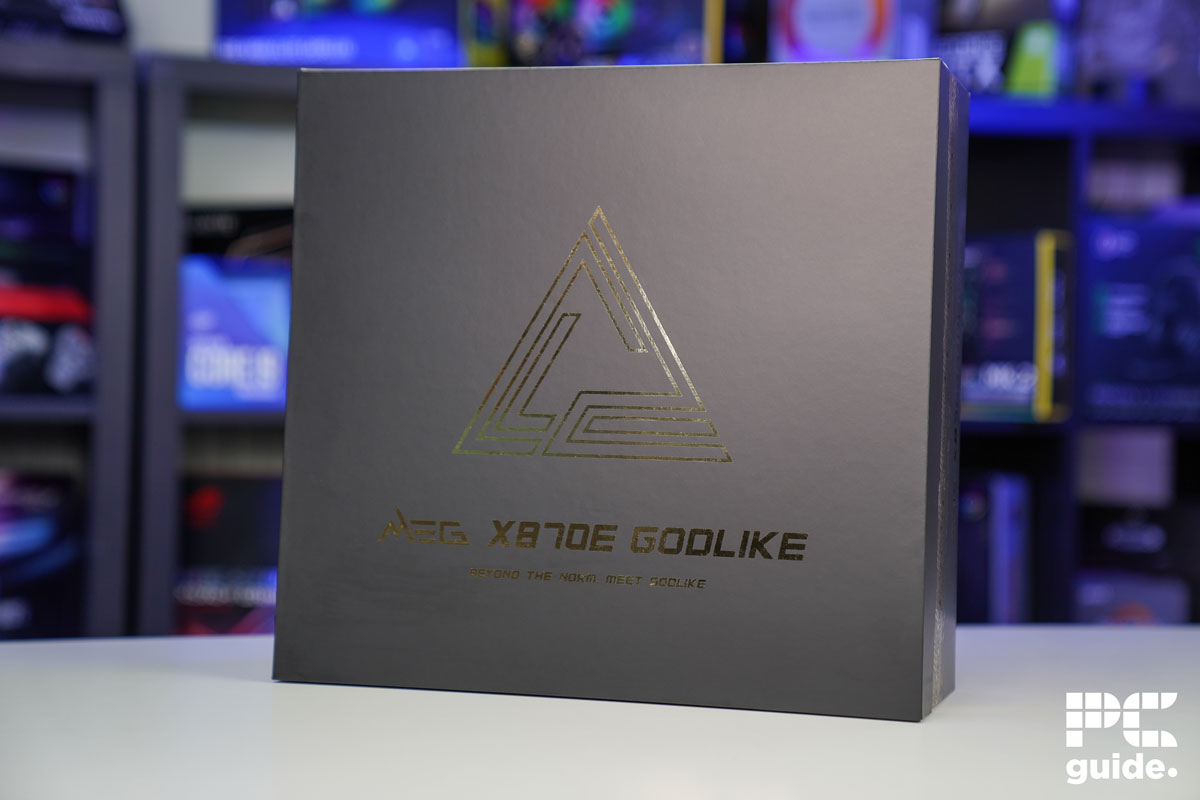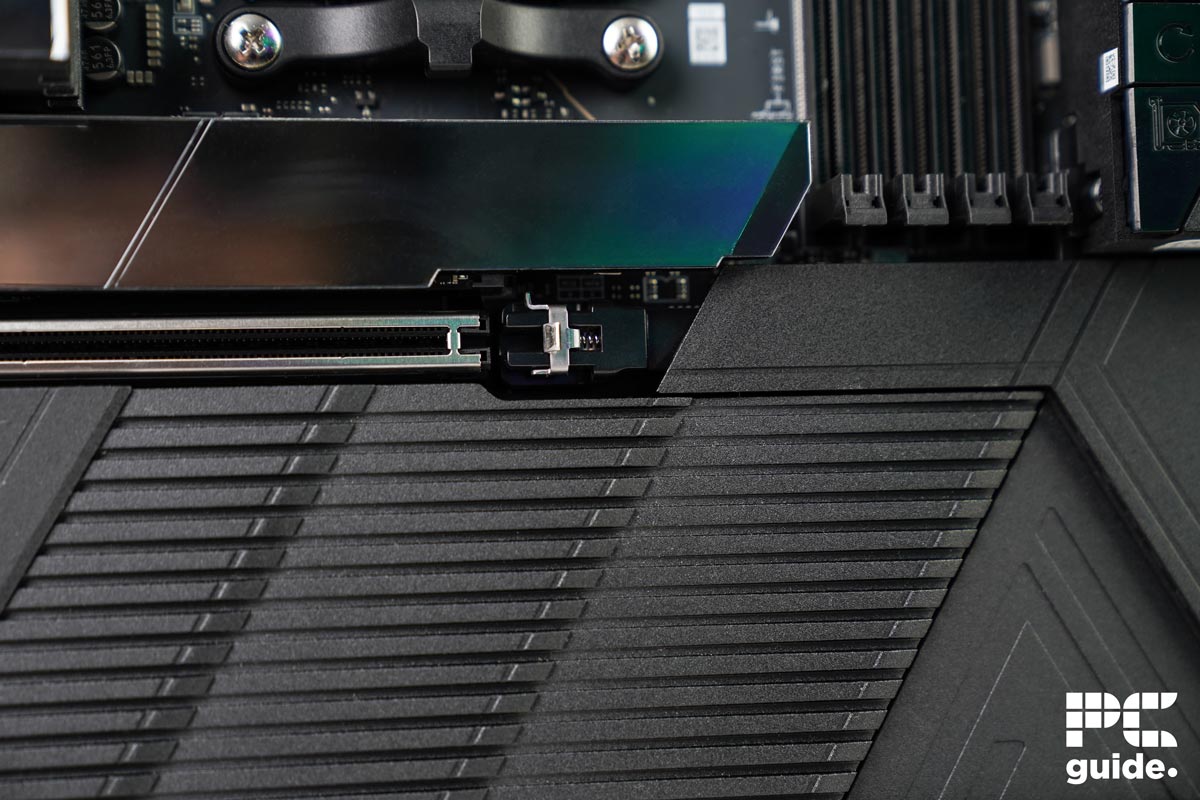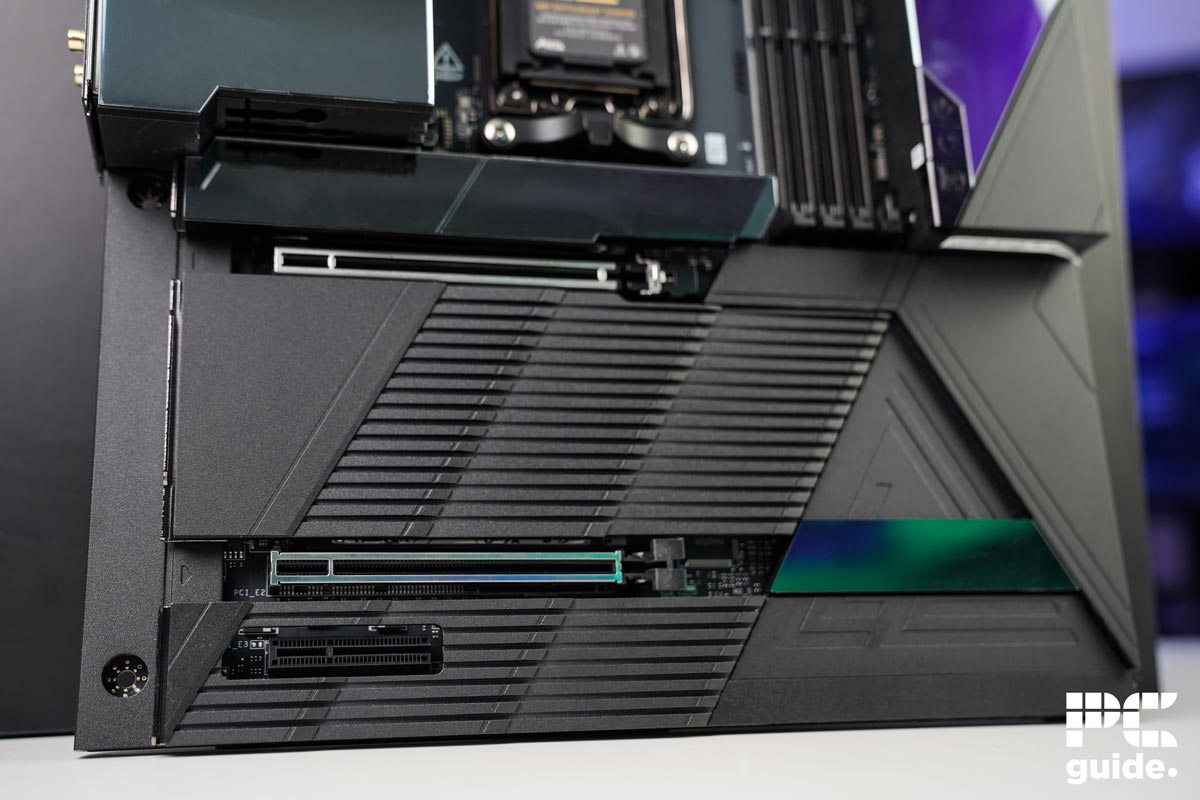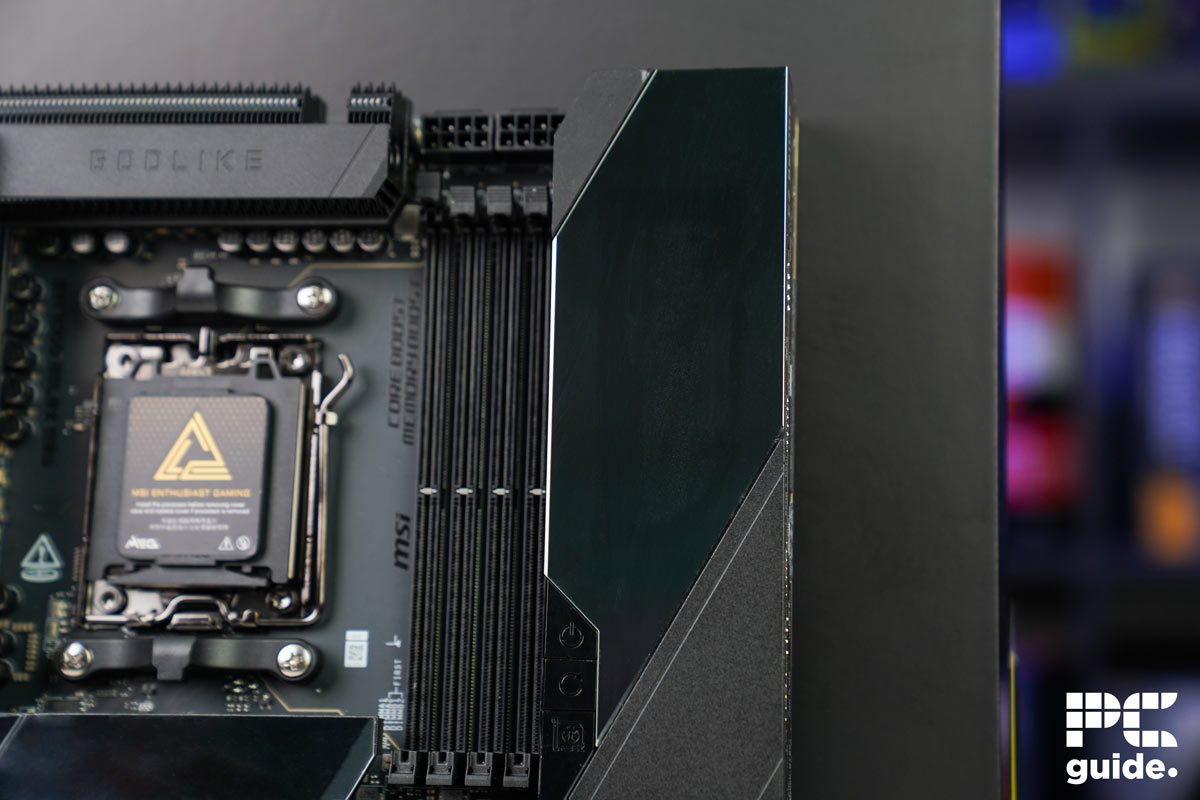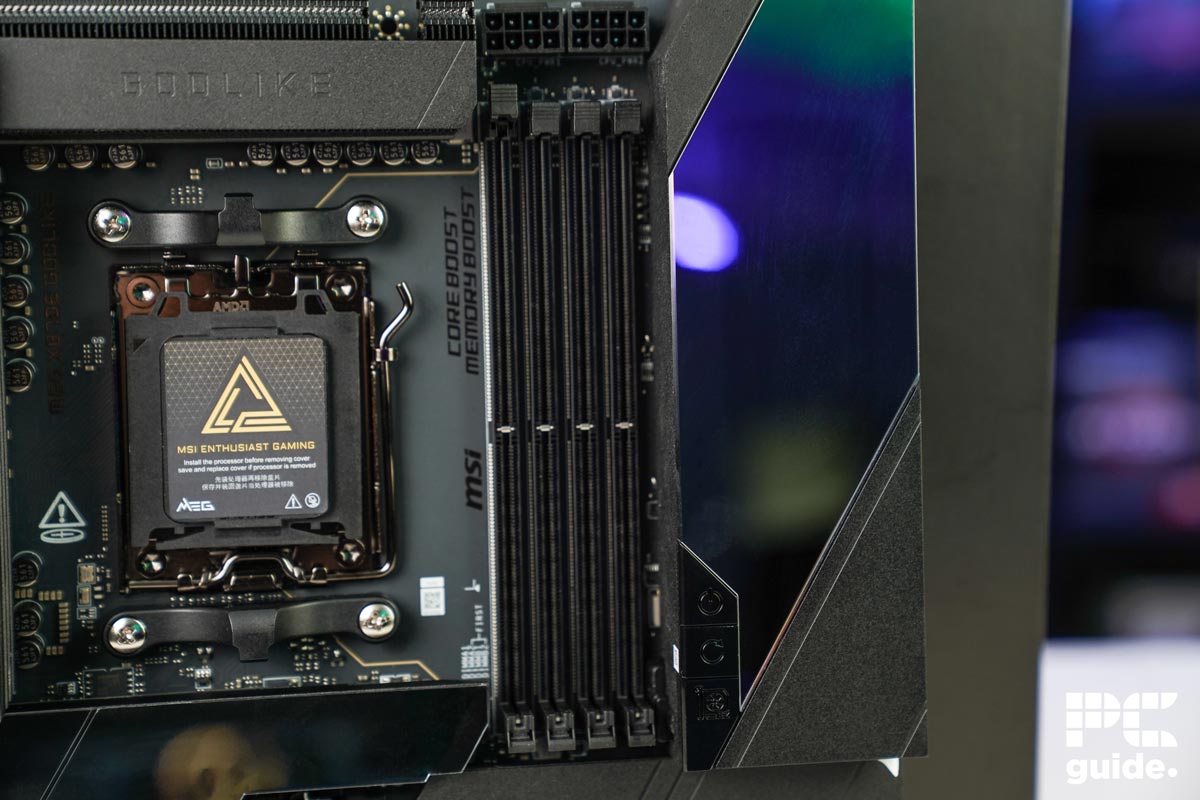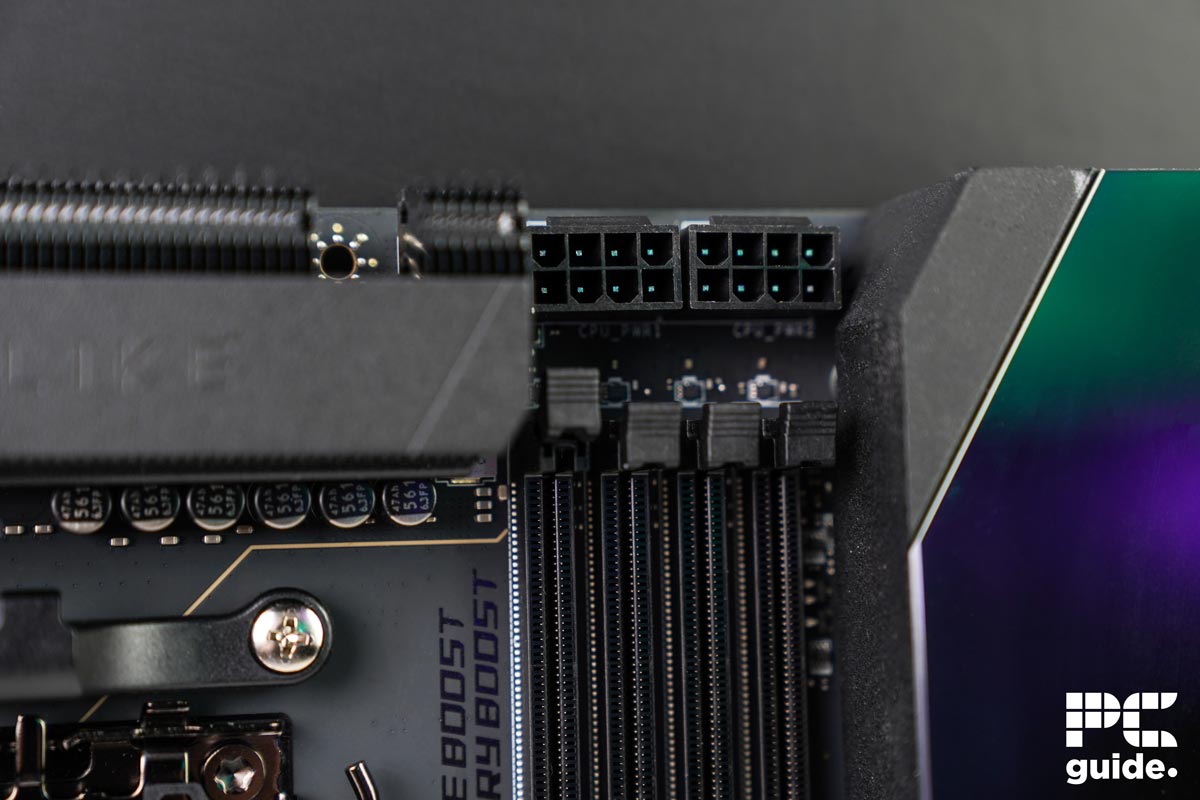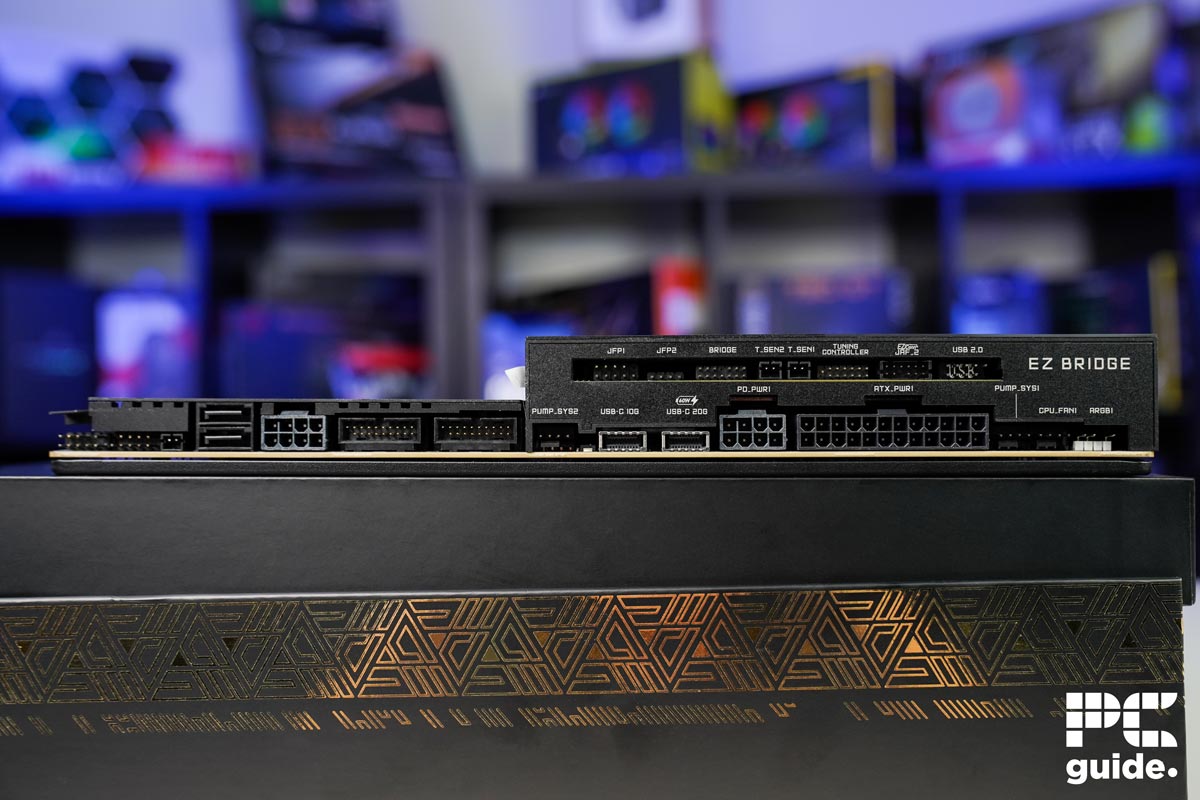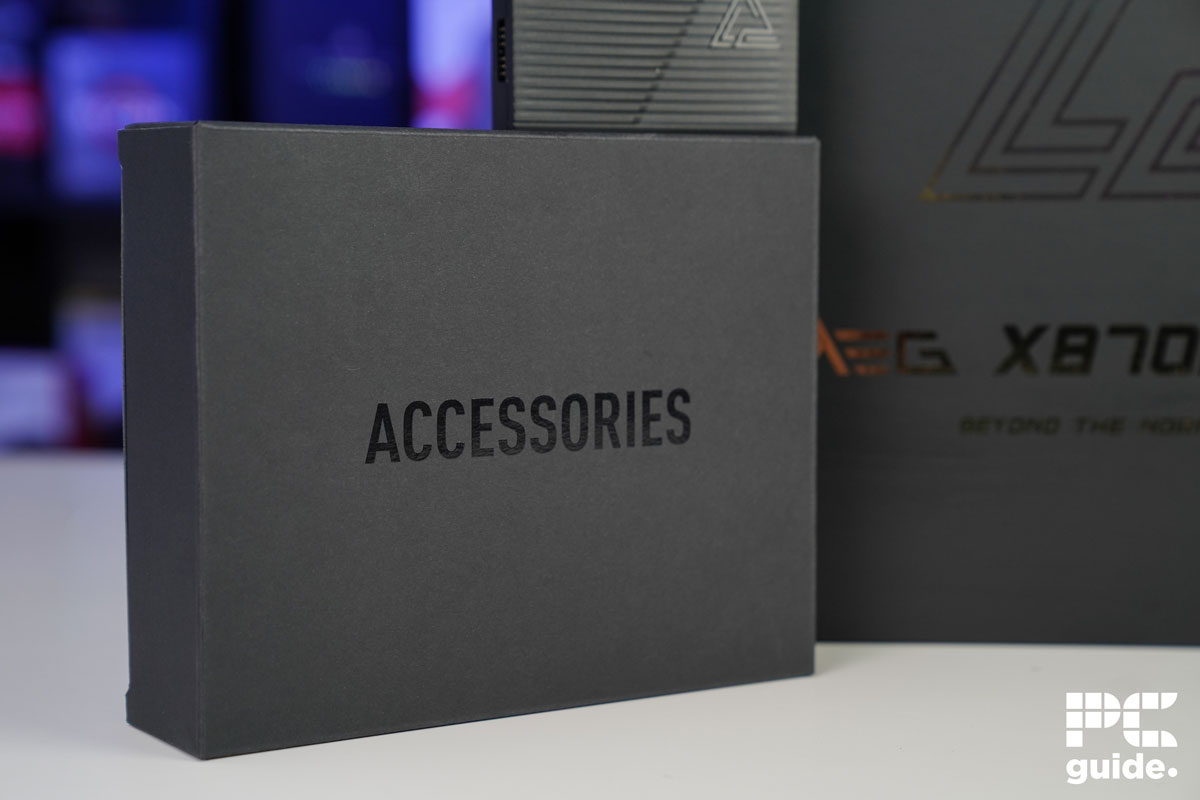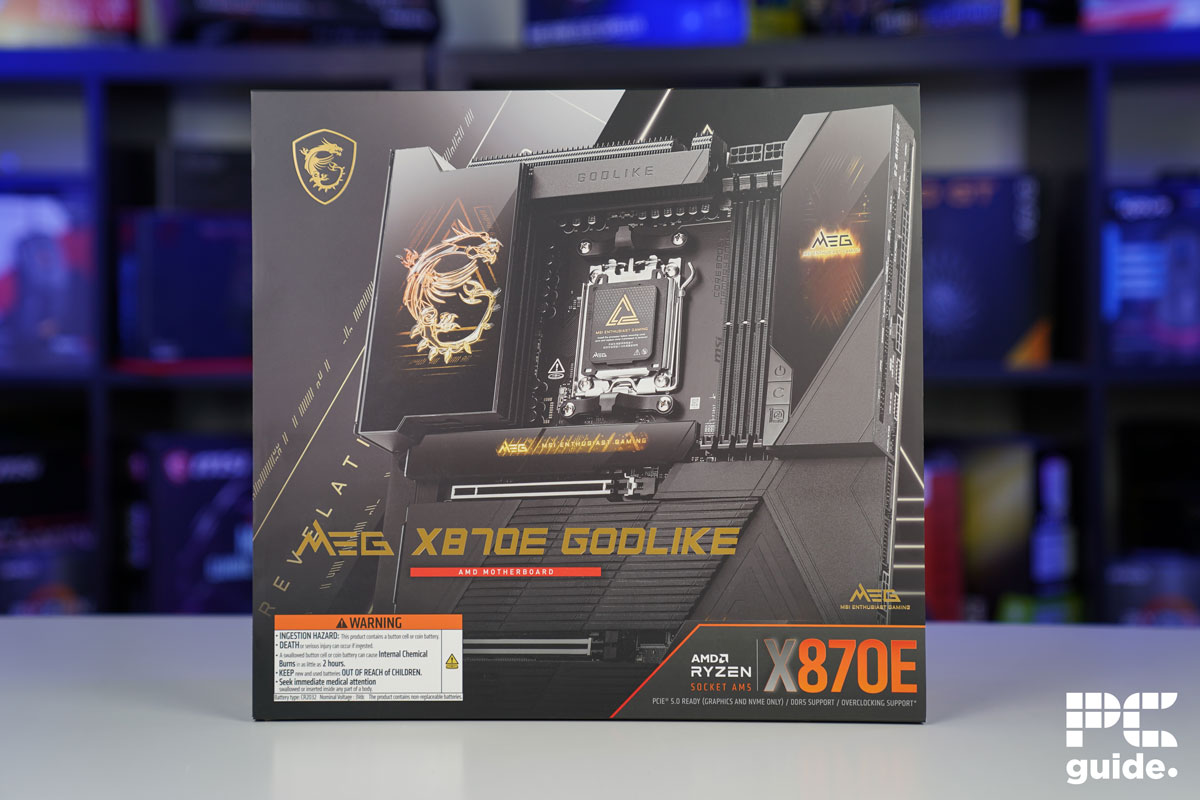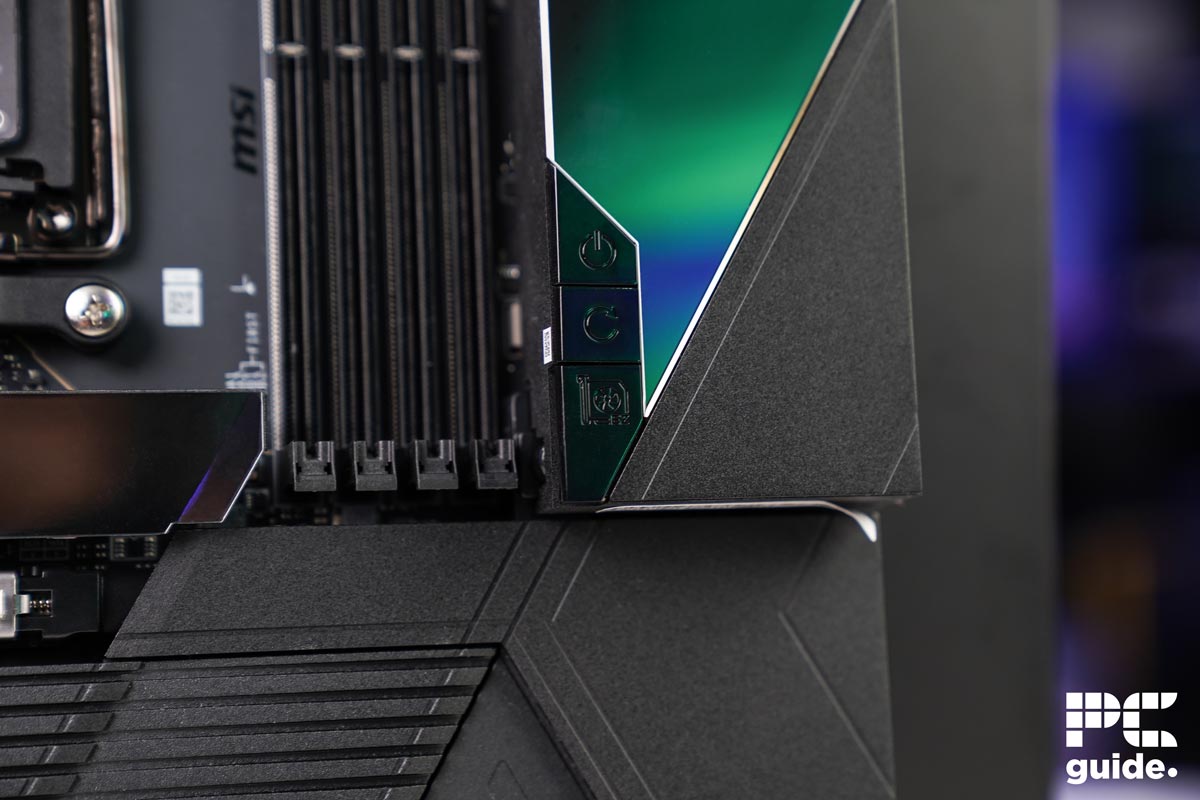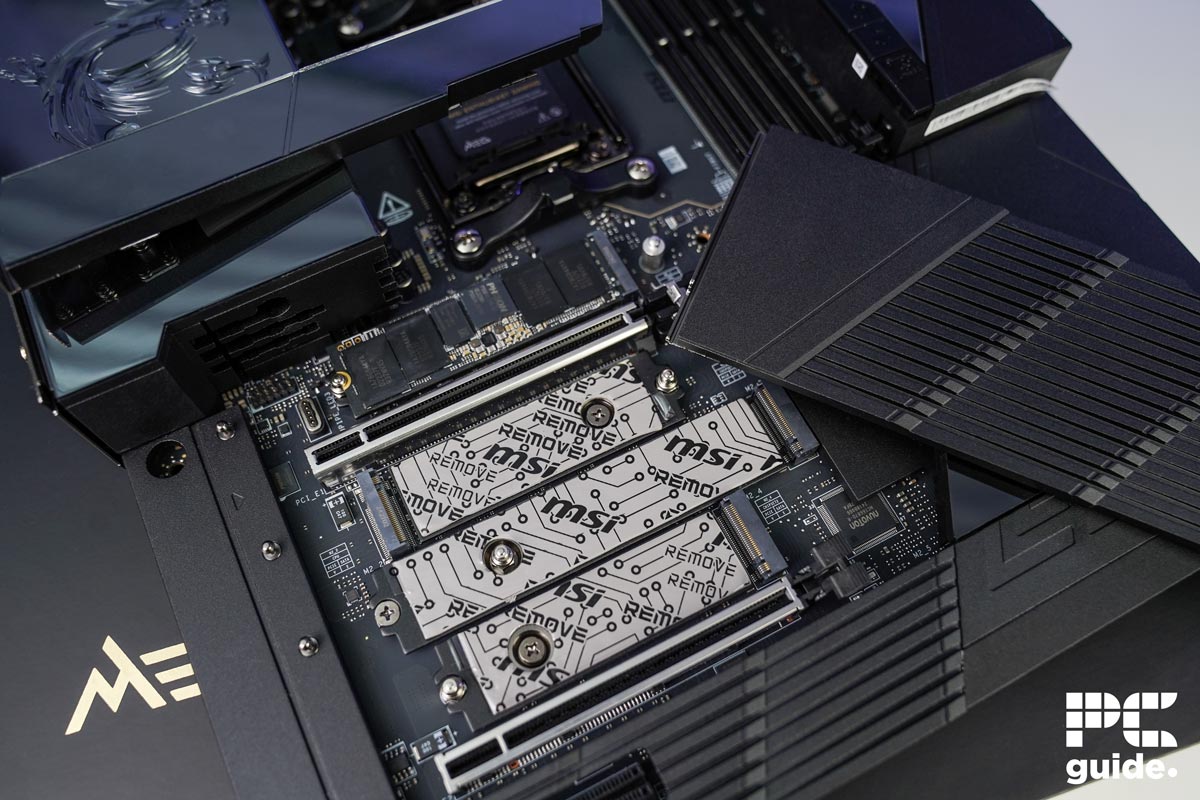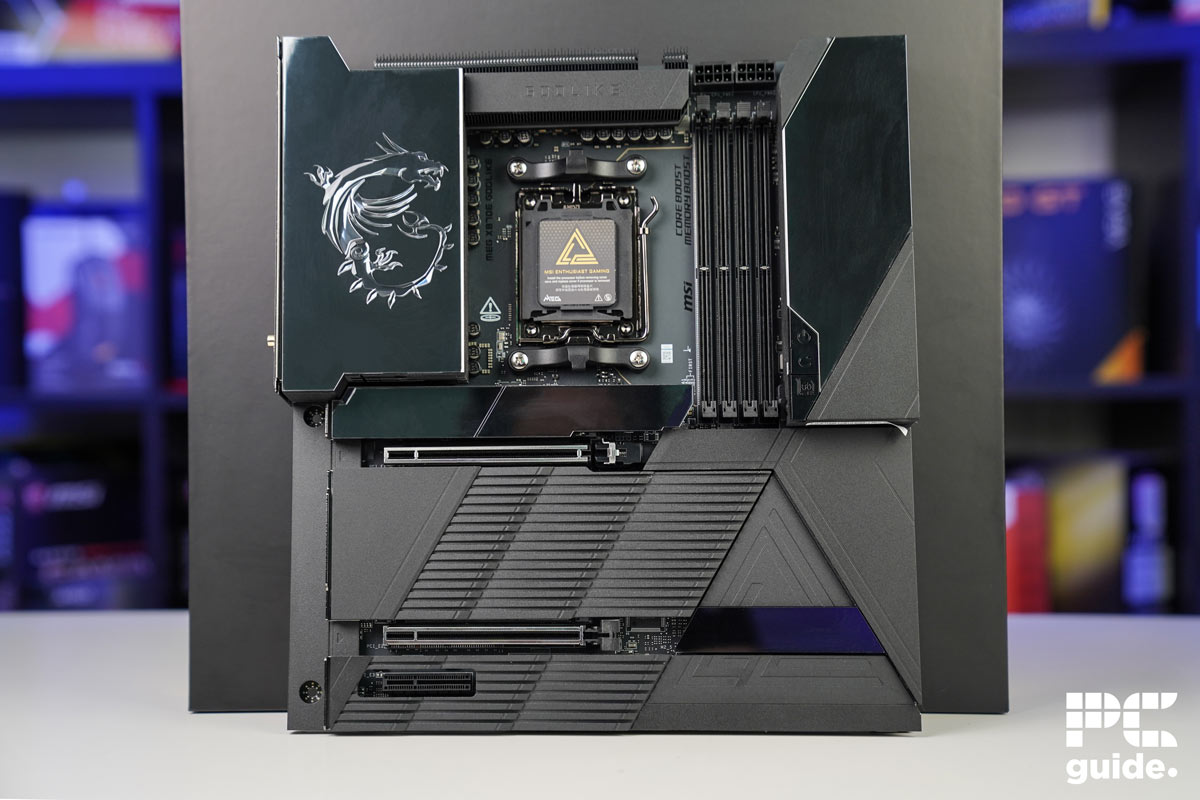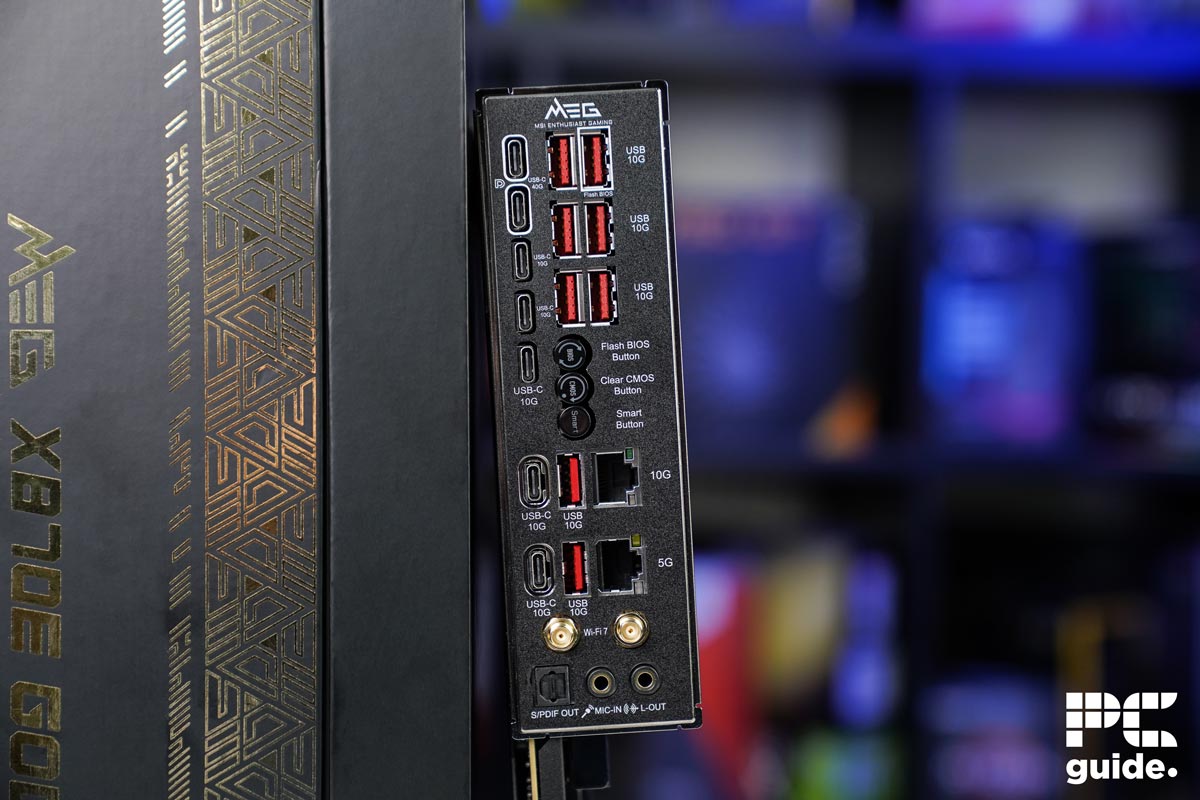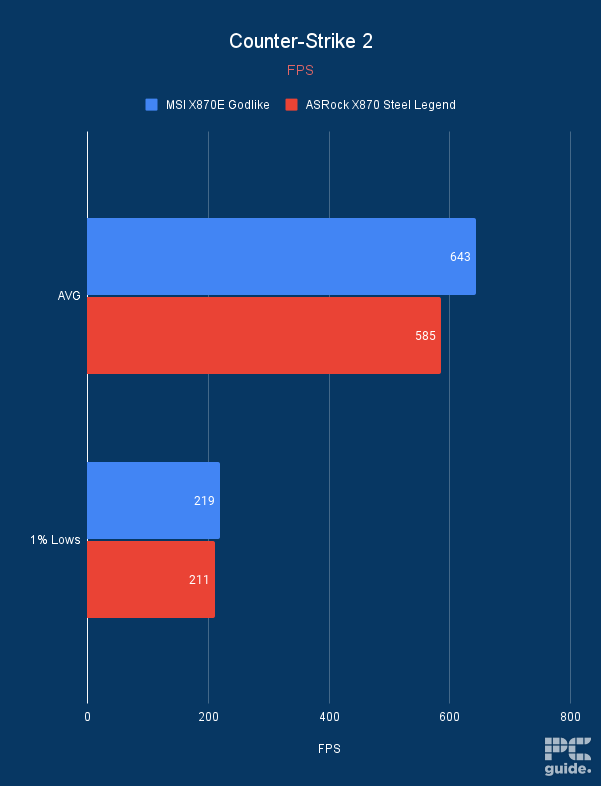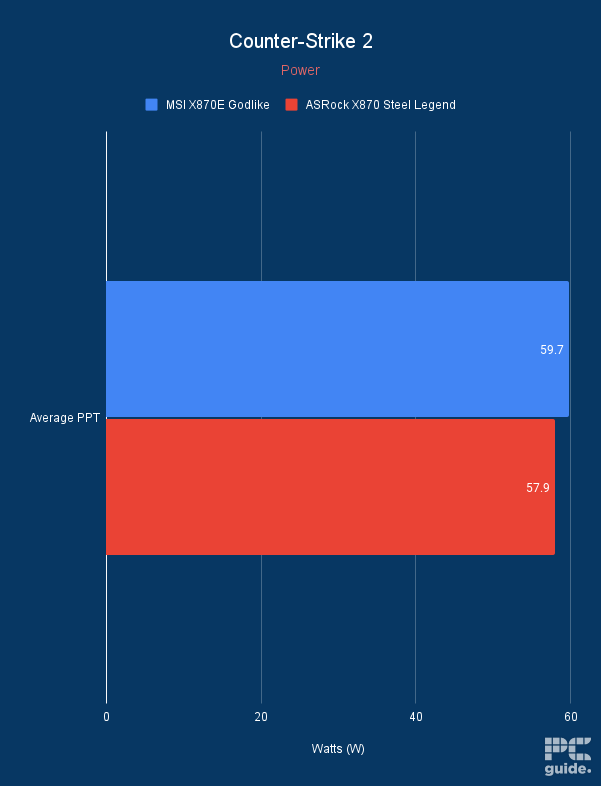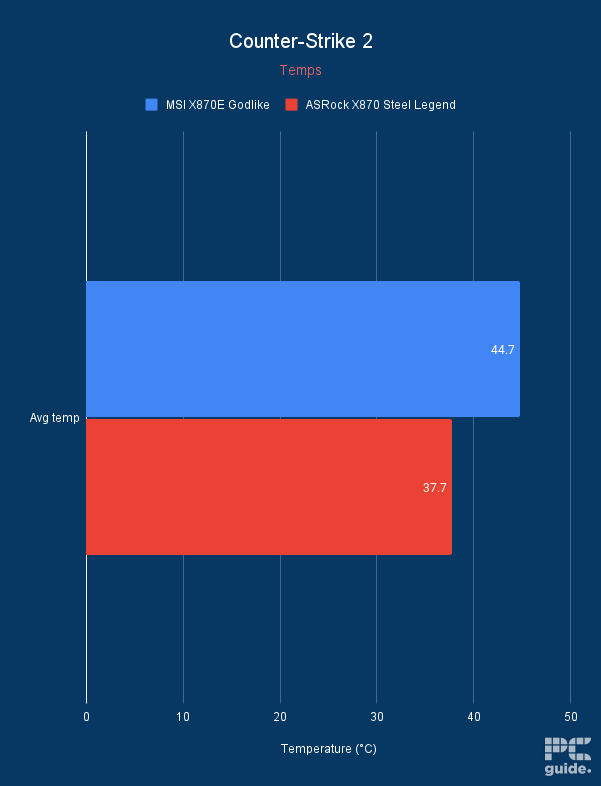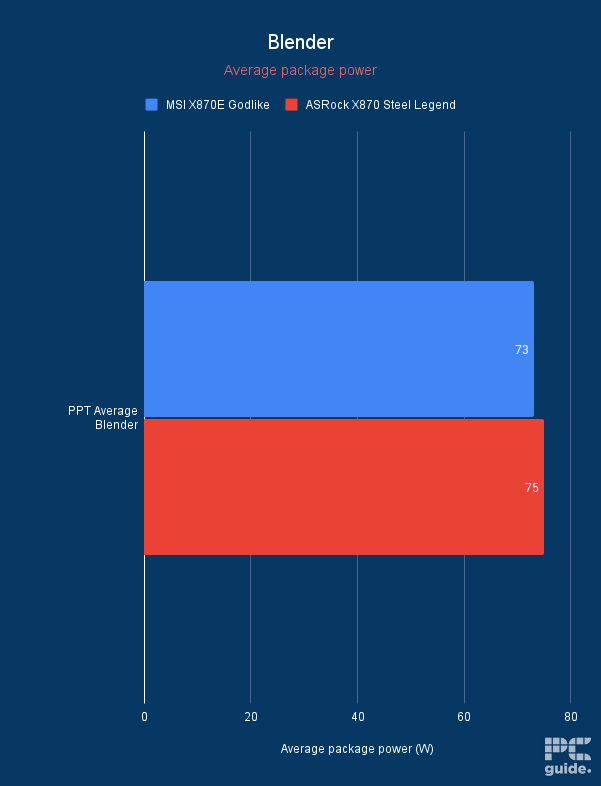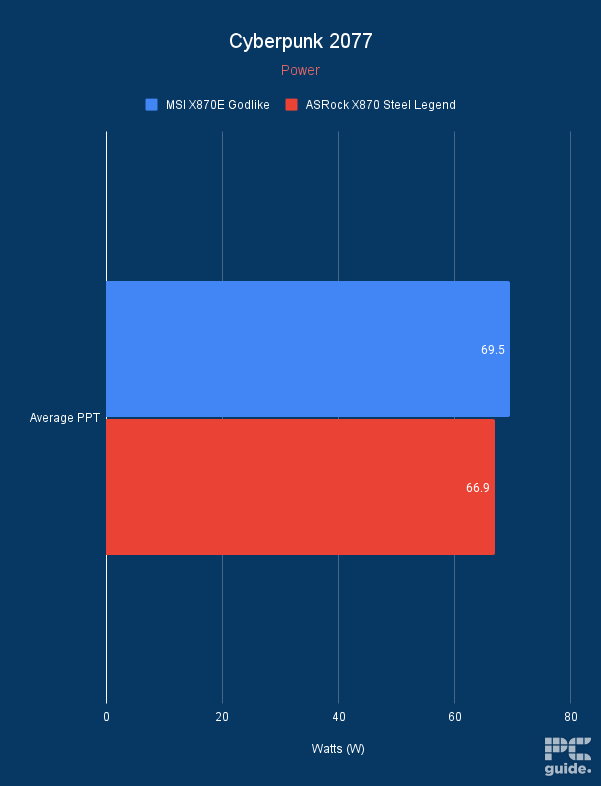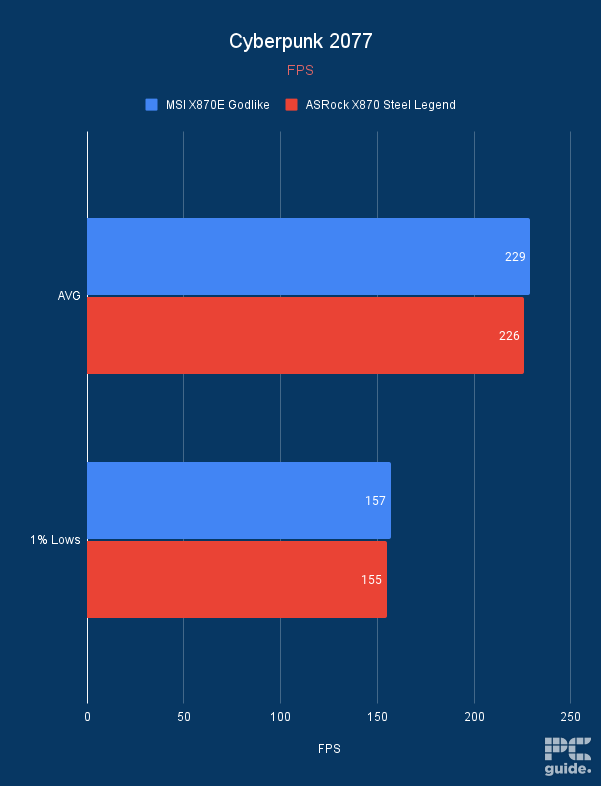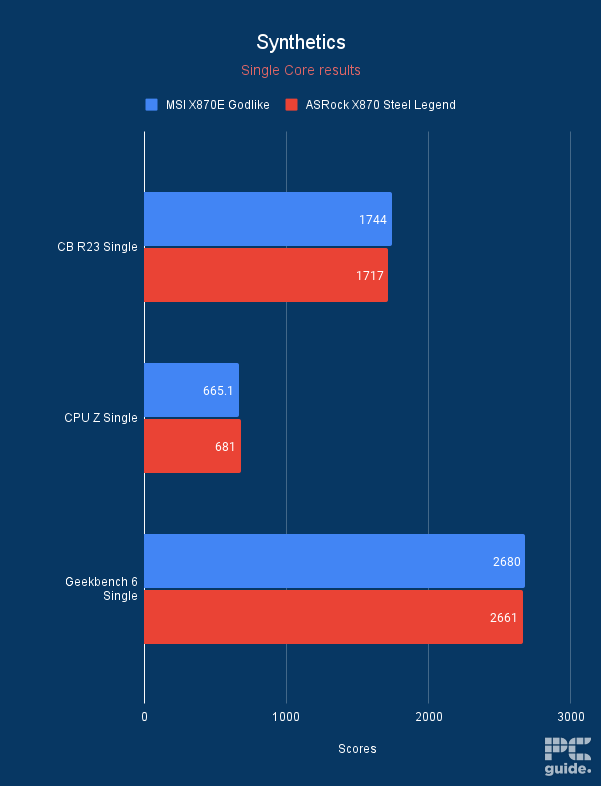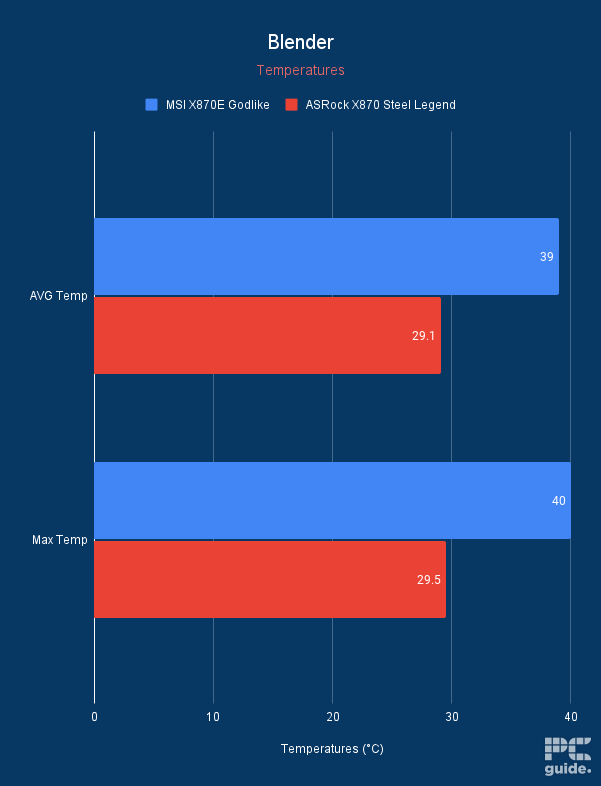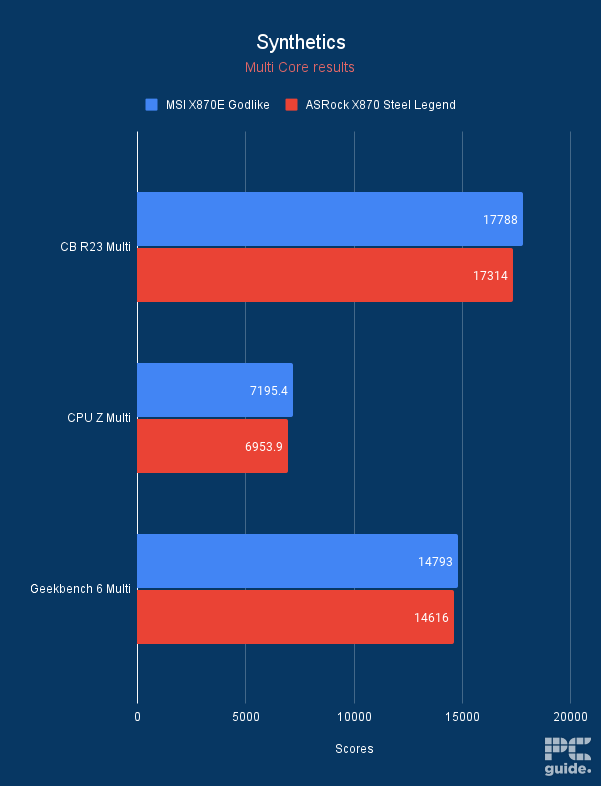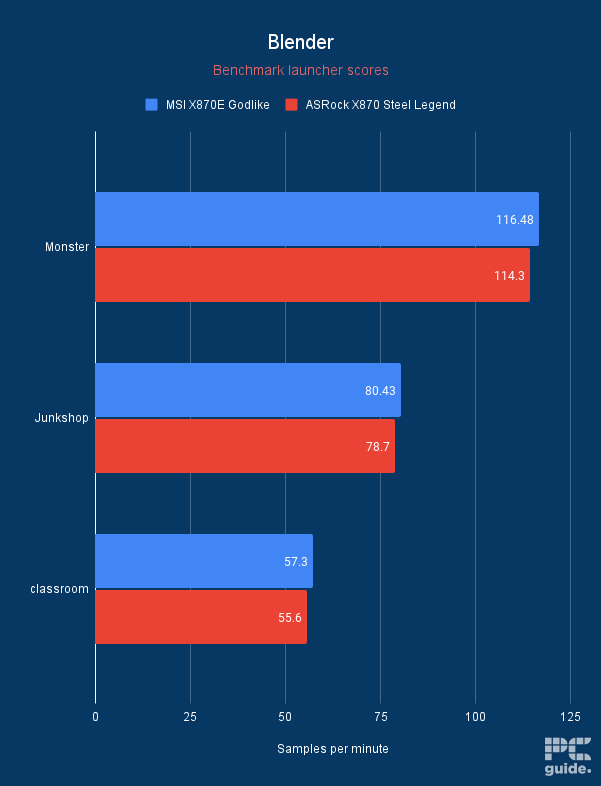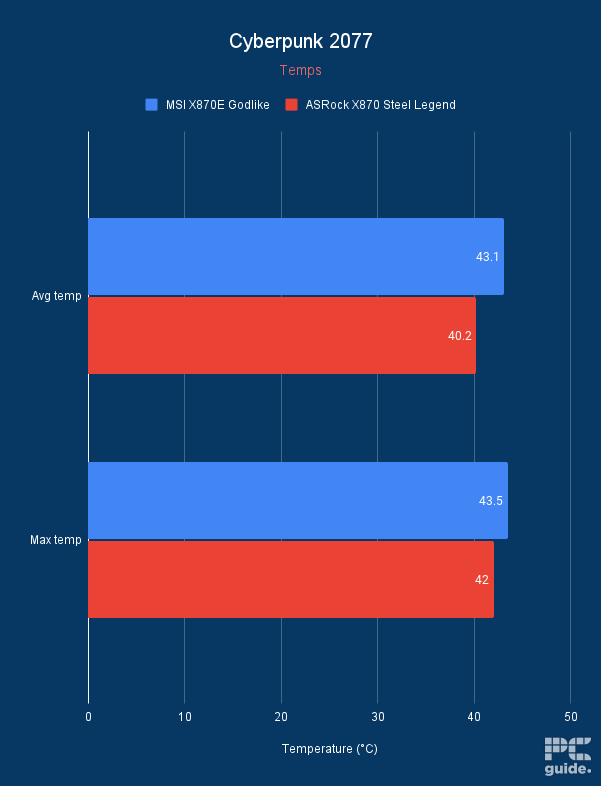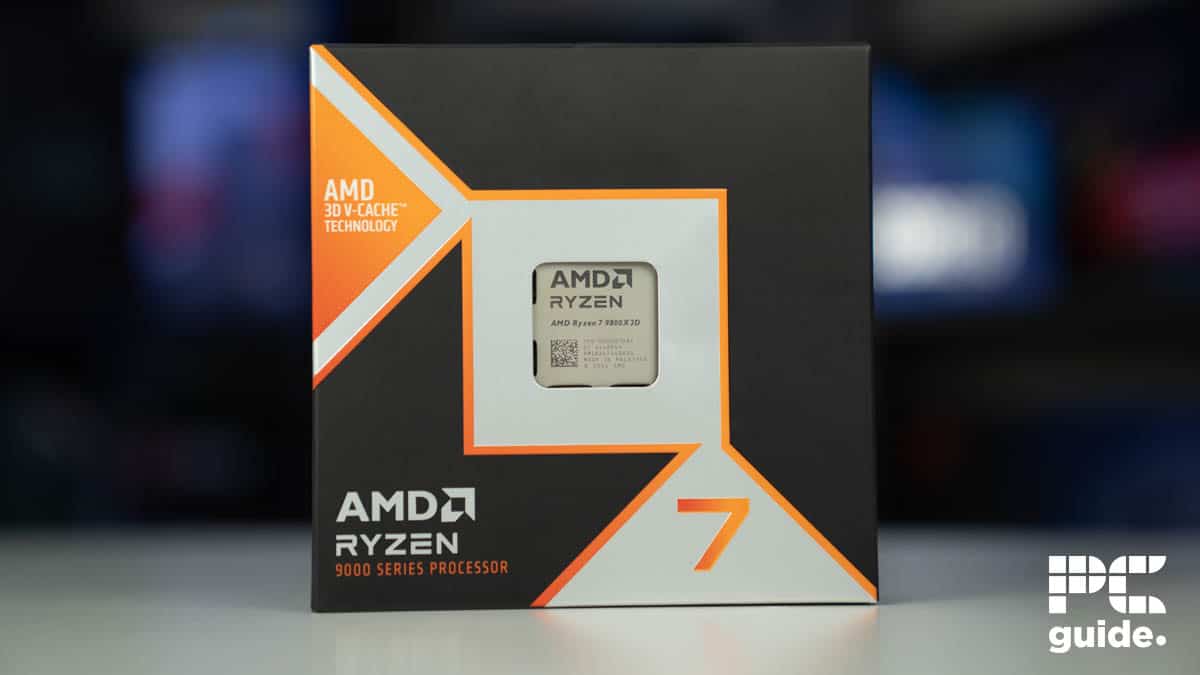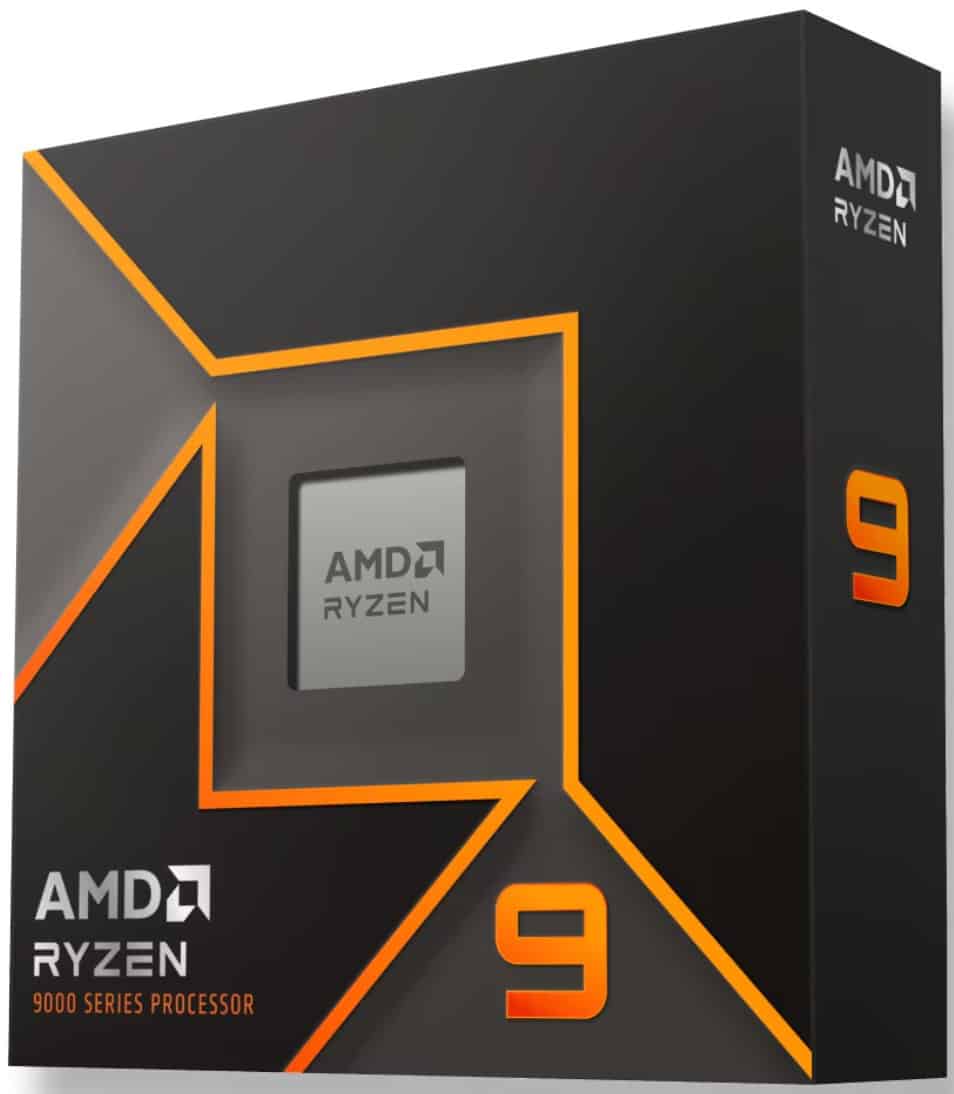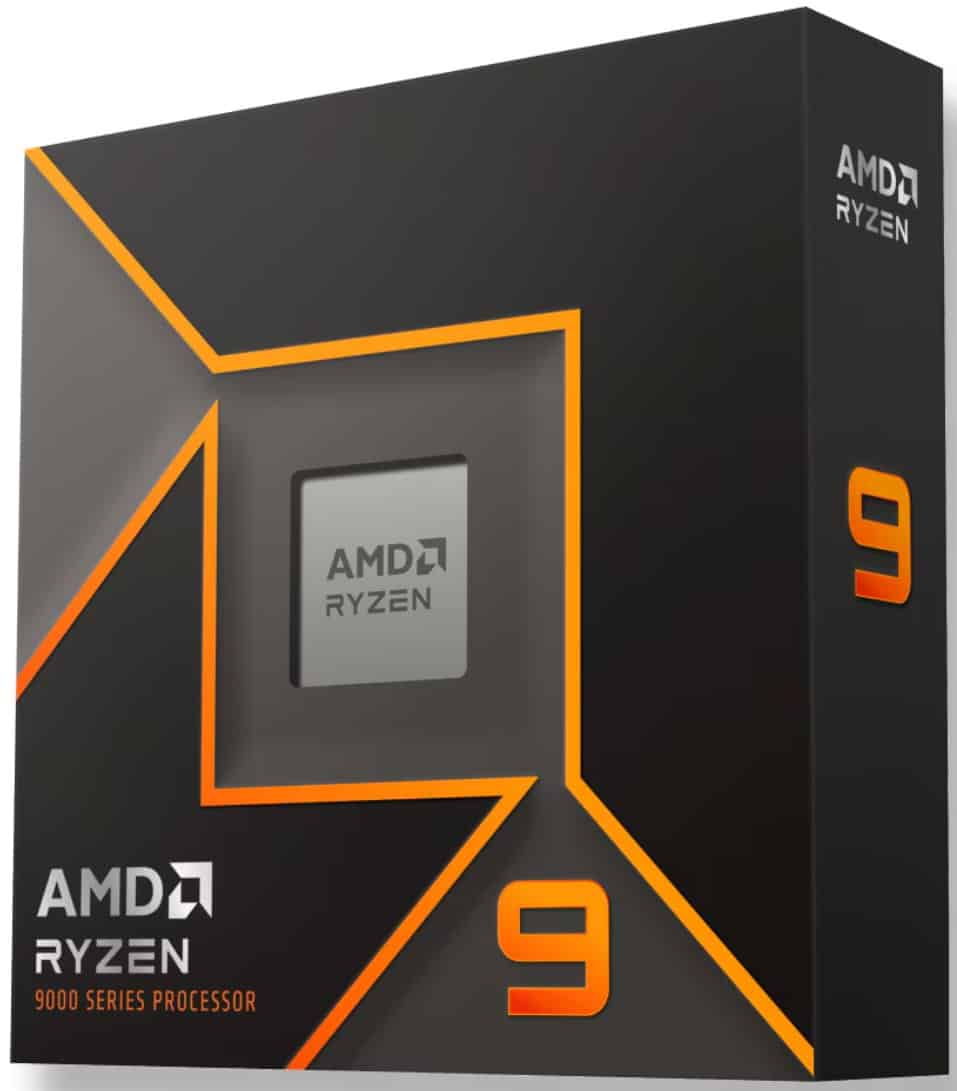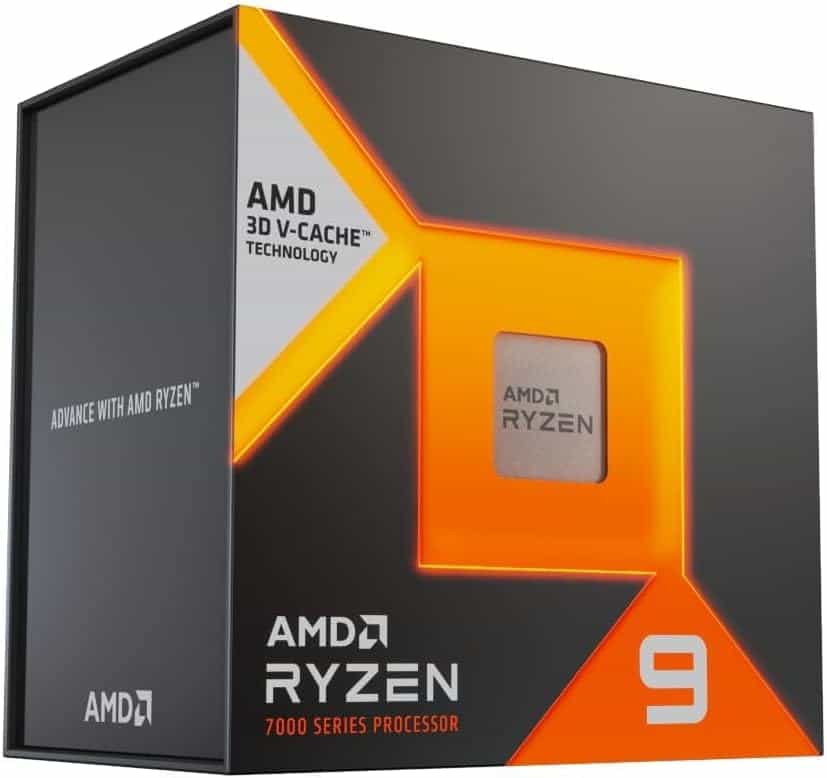MSI X870E MEG GODLIKE review – premium build quality and impressive performance
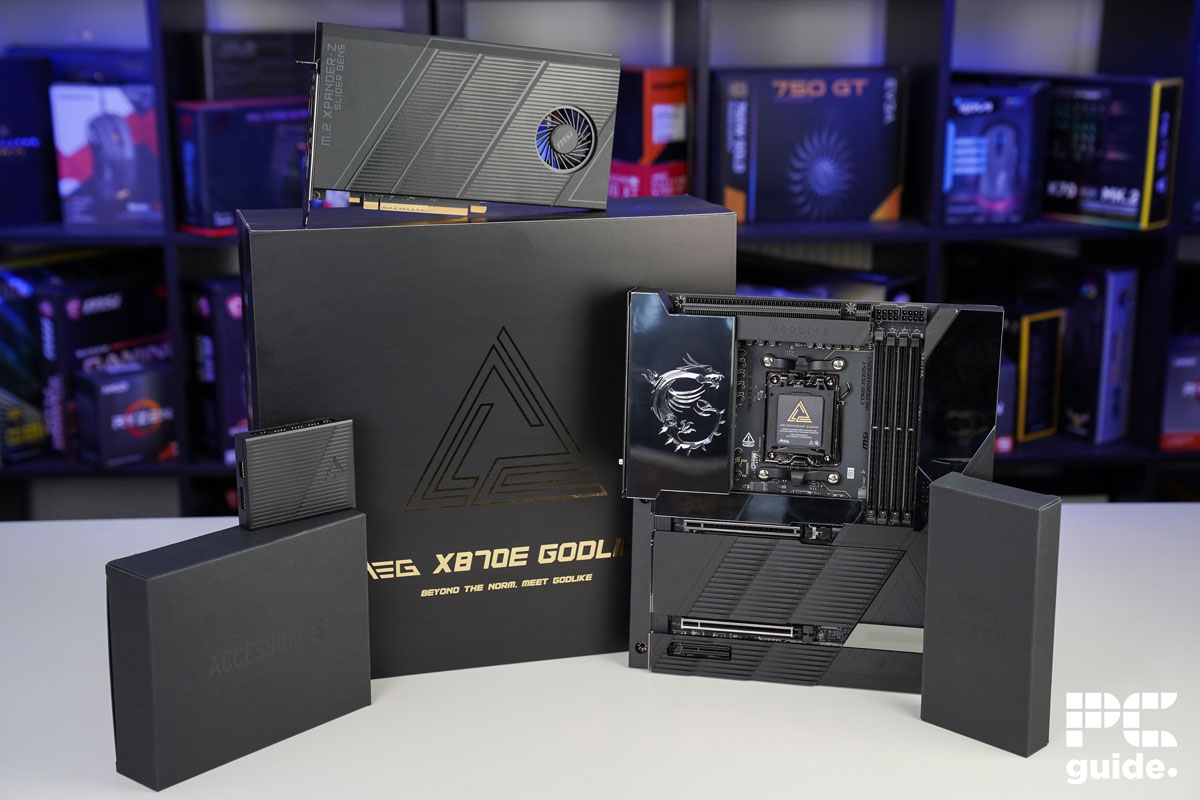
Table of Contents
With the latest release of Ryzen 9000 CPUs, your motherboard has a new-generation chipset to consider, so I’ve taken a look at the MSI MEG X870E GODLIKE, an X870E motherboard, to see how it stacks up. The big question as always is what sets this apart from other motherboards in its weight-class, and if it’s designed purely for performance, looks, or hopefully both…

- Socket: AM5 (LGA 1718)
- Chipset: X870E
- Form factor: E-ATX (305x277mm)
- PCIe version: Gen 5 PCIe and Gen 5 NVMe
- Memory speed: 9000 – 5600 (OC) MT/s / 5600 – 4800 (JEDEC) MT/s
- Memory capacity: 256GB DDR5
The X870 Godlike is an incredible and fascinating motherboard. It includes everything you might need to extract the most out of your components and plenty of help along the way with installation and support. It’s designed to be future-proof for plenty of years and generations, which may not be necessary for most people right this second. That being said, for those looking to ensure their PC build is the best it can possibly be, and don’t mind spending the cash, this is a great option that will serve them very well indeed.
- Great features and accessories
- Incredible build quality and EZ connection additions
- Top overclocking potential with one click and power support
- Plenty of fast and future-proof connectivity
- Skyhigh price, more than most other PC components
Design and usability
When looking at the board’s design, it pretty much has everything on it, along with the quality to add on top. It’s a sleek and premium-looking board, considering it is mostly covered and barely has any PCB on display. Instead, you get a clean, dark metal board which is highlighted in areas with mirrors and LED displays.
Prime Day is finally here! Find all the biggest tech and PC deals below.
- Sapphire 11348-03-20G Pulse AMD Radeon™ RX 9070 XT Was $779 Now $739
- AMD Ryzen 7 7800X3D 8-Core, 16-Thread Desktop Processor Was $449 Now $341
- ASUS RTX™ 5060 OC Edition Graphics Card Was $379 Now $339
- LG 77-Inch Class OLED evo AI 4K C5 Series Smart TV Was $3,696 Now $2,796
- Intel® Core™ i7-14700K New Gaming Desktop Was $320.99 Now $274
- Lexar 2TB NM1090 w/HeatSink SSD PCIe Gen5x4 NVMe M.2 Was $281.97 Now $214.98
- Apple Watch Series 10 GPS + Cellular 42mm case Smartwatch Was $499.99 Now $379.99
- ASUS ROG Strix G16 (2025) 16" FHD, RTX 5060 gaming laptop Was $1,499.99 Now $1,274.99
- Apple iPad mini (A17 Pro): Apple Intelligence Was $499.99 Now $379.99
*Prices and savings subject to change. Click through to get the current prices.
Even the board’s reverse, is covered with a metal plate, which gives it that extra premium feel while making it much safer and easier to use. The plate now covers the soldered ends of the board components, reducing the risk of shorting anything or even cutting your fingers when handling it.
Ease of use is a theme throughout the board, as everything that can be added to make things much simpler for builders and users seems to have been included. Whether you’re a first-timer or pushing it to the limit, it has everything you’d want.
One of those includes a magnetic connector, its EZ Link solution, with a dashboard display. It consolidates plenty of front panel connectors and fans in one place. This is unusual for motherboard connector placements, but I’m not complaining. The dashboard itself gives you more than just error codes too. It shares warnings of CPU or RAM malfunction that helps you diagnose a broken CPU. It also has a power, reset, and PCIe release button, making it quicker and easier to change and test things without wiring it all up.
It’s not only the top slot PCIe installation that is easier. As a whole, the M.2 solution across the board is super accessible and simple to use.. With five onboard and a PCIe card that handles two more M.2s on sleds, you get plenty of additional storage. On the motherboard itself, a simple press of a tab is all you need to remove a heatsink. No need for screws either, as it’s just a simple clip that tilts to hold and release the NVMes.
It also comes with plenty of cooling and strength to the board, like the whole cover of heatsinks across its face and chipset. In fact, the the entire top and IO are covered in its FROZR design. With aluminum covers, wavy fin designs, direct-touch cross-heat pipes, and thermal pads, it does incredibly well to transfer heat and ensure its components are kept cool to keep pushing more power.
Specifications
| Socket | AM5 (LGA 1718) |
| Chipset | X870E |
| Form Factor | E-ATX (305x277mm) |
| RAM | 4x DDR5 UDIMM, Maximum Memory Capacity 256GB Memory Support DDR5 9000 – 5600 (OC) MT/s / 5600 – 4800 (JEDEC) MT/s |
| VRM | 24+2+1 Due Rail Power System 110A Smart Power Stage |
| PCIe | PCI_E1 Gen PCIe 5.0 supports up to x16 (From CPU) PCI_E2 Gen PCIe 5.0 supports up to x8 (From CPU) PCI_E3 Gen PCIe 4.0 supports up to x4 (From Chipset) |
| Storage | M.2_1 Source (From CPU) up to PCIe 5.0 x4, supports 2280/2260 devices M.2_2 Source (From CPU) up to PCIe 5.0 x4, supports 2280/2260 devices M.2_3 Source (From Chipset) up to PCIe 4.0 x4, supports 22110/2280 devices M.2_4 Source (From Chipset) up to PCIe 4.0 x2, supports 2280/2260 devices M.2_5 Source (From Chipset) up to PCIe 4.0 x4, supports 2280/2260 devices 4x SATA 6G M.2_1 Source (via M.2 XPANDER-Z SLIDER GEN5) up to PCIe 5.0 x4, supports 2280 devices M.2_2 Source (via M.2 XPANDER-Z SLIDER GEN5) up to PCIe 5.0 x4, supports 2280 devices |
| Fan Headers | 1x CPU Fan 2x Combo Fan (Pump_Sys Fan) EZ Control Hub (7x system fan headers, 2x ARGB, 1x RGB, 1x Waterflow) |
| Back panel connectivity | 8x USB 10Gbps (Type-A) Flash BIOS Button Clear CMOS Button Smart Button 10G LAN 5G LAN Wi-Fi / Bluetooth HD Audio Connectors 2x USB 40Gbps (Type-C) 5x USB 10Gbps (Type-C) Optical S/PDIF-Out |
Starting with the connectivity options, many choices and technologies are in play. For example, the wireless offerings built into it include WiFi 7 and Bluetooth 5.4 from the get-go, which also uses EZ connectors for the antennae. There are two ethernet ports to pick from, with both 10Gbps and 5Gbps, giving you a good pick of networking solutions without needing any extras and if you have the equipment set up for it.
That also includes the back connectors in the IO, and there’s a strong selection, running a minimum of 10Gbps USB ports of Type-C and A that give you speedy connection options. The system also offers a couple of 40Gbps DisplayPort Type-C ports. This means the back connections are also quite future-proof, including various control buttons for BIOS and CMOS clearing and a smart button to utilize.
There’s also a whole host of PCIe Gen 5 lanes for your NVMe or GPU. Although the M.2s might be here, PCIe 5 GPUs have not been released yet, but there will undoubtedly be some on the way down the line. With plenty of ports for both, you won’t be limited in the number of hardware you can install.
That also includes the DDR5 support. With 256GB split over four DIMMS, you have the latest specs with a good overclocking potential available. The Godlike goes up to 9000 MT/s if you don’t want to skimp out on any speed and enjoy all your components working at their finest.
Even the power setup is made with performance in mind. It has a 24+2+1 110A VRM setup, so it needs intensive cooling across the top. It has supplemental power connectors for PCIe devices and PD USB internal connectors, meaning that even your PSU needs to be pretty beefy to use all of this board’s power potential.
Performance
| Component | Name |
| CPU | AMD Ryzen 7 7800X3D |
| GPU | RTX 3090 |
| Memory | Corsair Dominator Titanium 64GB DDR5 @ 6800MT/s |
| Motherboard | MSI X870E MEG GODLIKE |
| CPU cooler | ROG RYUJIN III 360 |
| Power supply | Phanteks 1000W |
| Case | Cooler Master Masterframe |
After setting up and getting to know the motherboard, I installed it on our test bench, with one of the top CPUs, the 7800X3D, and a powerful GPU, the 3090. I put it through various tests along with a good amount of fast RAM, tracking the performance, temperatures, and power to see how it holds up.
Firstly, I looked at the synthetics and more render-based tasks to see how they handle the processor power. Blender has a good showing in performance scores and the power and board temperatures. Although, in comparison to the ASRock board, it might seem hotter, as it does come with a higher-tier chipset and a higher-amperage power design that will give out more heat. That’s nothing to really worry in this case, to be honest.
The same can be seen in the synthetic benchmarks with single and multi-core performance. Although it’s not a big boost, it provides more for the CPU by default. That’s without even overclocking or pushing any more out of it, which the motherboard is set up to do.
Regarding gaming, the performance is also quite decent and above the other options I tested against. It gains a few FPS, although the PPT and temps rise higher to achieve that, so I recommend decent system cooling in your build to help keep it lower.
CPU pairings
Below, I’ve listed a few top-choice processors that are most likely best paired with the motherboard. Considering their high price and tier, you’ll most likely want to pick some of the top CPUs to go for.
-
AMD Ryzen 7 9800X3D
- Cores: 8
- Threads: 16
- Boost clock speed: 5.2GHz
- Base clock speed: 4.7GHz
- L3 cache: 96MB
- TDP: 120W
-
AMD Ryzen 9 9950X
- Cores: 16
- Threads: 32
- Boost clock speed: 5.7 GHz
- Base clock speed: 4.3 GHz
- L3 Cache: 64 MB
- TDP: 170 W
-
AMD Ryzen 9 9900X
- Cores: 12
- Threads: 24
- Boost clock speed: 5.6 GHz
- Base clock speed: 4.4 GHz
- L3 Cache: 64 MB
- TDP: 120 W
-
AMD Ryzen 9 7950X3D
- Cores: 16
- Thread: 32
- Base Clock Speed: 100 MHz
- Boost Clock Speed: 5.7 GHz
- L3 Cache: 128 MB (shared)
- TDP: 120 W
As an AM5 motherboard, you already have plenty of CPUs to consider, and we expect more to come. But depending on what you need, there are plenty of considerations, as there are loads of options for cores and power, such as an X3D cache that excels in gaming, or maybe a bit of both.
If you can find one in stock, I’d suggest the 9800X3D. With a restructuring in its setup, it unlocks its potential in overclocking and becomes a more powerful processor that excels in gaming and is the go-to top CPU to do so.
However, if the lack of cores and threads is more important, then the 9950X or 9900X are the ones to go for. With a selection of 16 and 12 cores, respectively, they are more made for productivity tasks that can use all those extra transistors to do the hard work.
You could consider a combination of the two, though. At the time of writing, the 7950X3D offers both high core counts and a stacked cache. But we’re still waiting for the 9000 series to provide a higher selection in its range an din the newer generation.
Conclusion

- Socket: AM5 (LGA 1718)
- Chipset: X870E
- Form factor: E-ATX (305x277mm)
- PCIe version: Gen 5 PCIe and Gen 5 NVMe
- Memory speed: 9000 – 5600 (OC) MT/s / 5600 – 4800 (JEDEC) MT/s
- Memory capacity: 256GB DDR5
Overall, the MSI MEG X870E Godlike is an incredible motherboard; it unlocks the full potential of your hardware and gives you everything you might need. Not only that, but it makes things so much easier with the EZ design and one-click options. It has plenty of features and connectivity, which is great for enthusiasts, but overkill for most. All in all, it’s a brilliant option for those looking to get the highest performance out of their builds.

